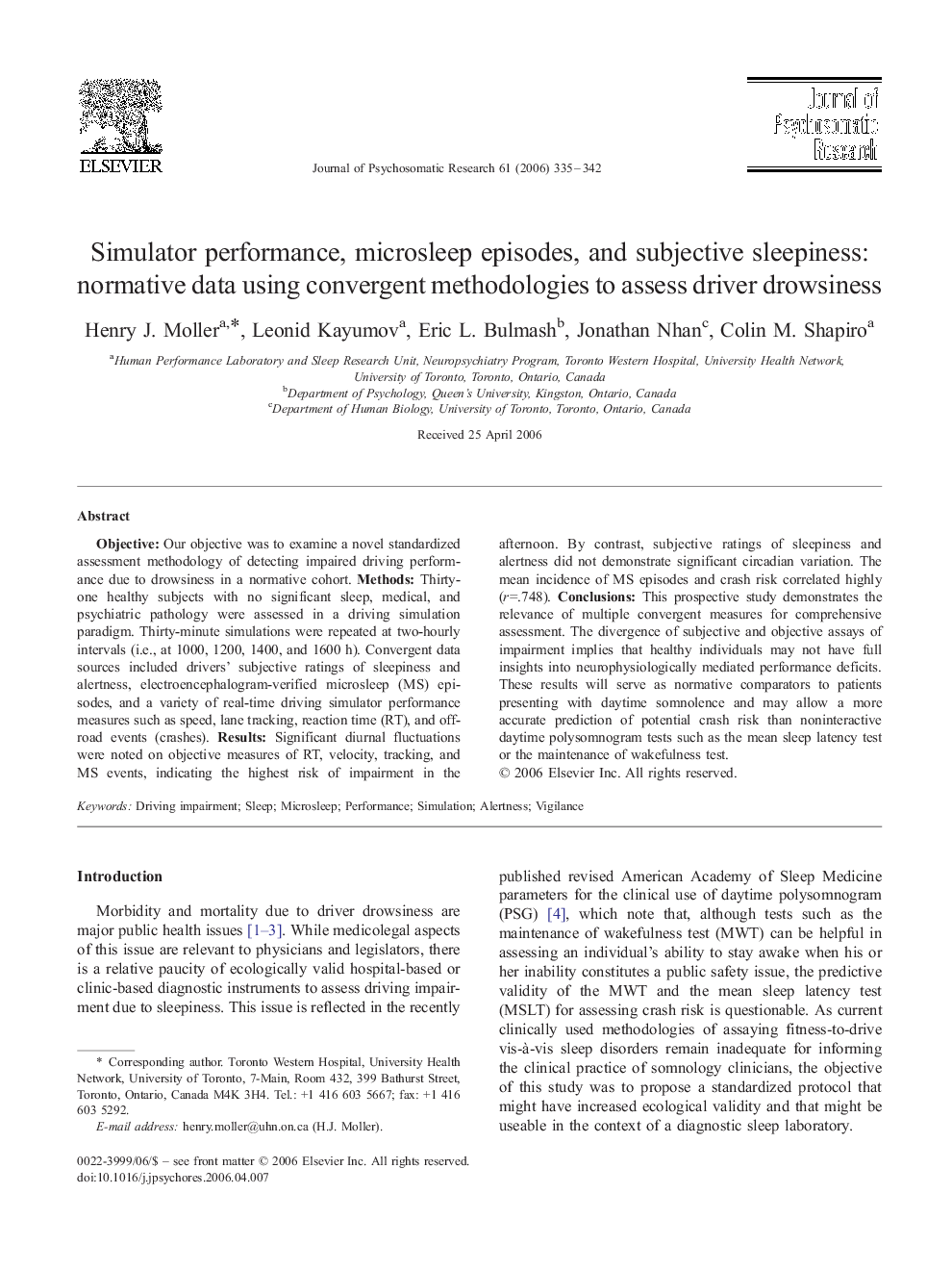| Article ID | Journal | Published Year | Pages | File Type |
|---|---|---|---|---|
| 950897 | Journal of Psychosomatic Research | 2006 | 8 Pages |
ObjectiveOur objective was to examine a novel standardized assessment methodology of detecting impaired driving performance due to drowsiness in a normative cohort.MethodsThirty-one healthy subjects with no significant sleep, medical, and psychiatric pathology were assessed in a driving simulation paradigm. Thirty-minute simulations were repeated at two-hourly intervals (i.e., at 1000, 1200, 1400, and 1600 h). Convergent data sources included drivers' subjective ratings of sleepiness and alertness, electroencephalogram-verified microsleep (MS) episodes, and a variety of real-time driving simulator performance measures such as speed, lane tracking, reaction time (RT), and off-road events (crashes).ResultsSignificant diurnal fluctuations were noted on objective measures of RT, velocity, tracking, and MS events, indicating the highest risk of impairment in the afternoon. By contrast, subjective ratings of sleepiness and alertness did not demonstrate significant circadian variation. The mean incidence of MS episodes and crash risk correlated highly (r=.748).ConclusionsThis prospective study demonstrates the relevance of multiple convergent measures for comprehensive assessment. The divergence of subjective and objective assays of impairment implies that healthy individuals may not have full insights into neurophysiologically mediated performance deficits. These results will serve as normative comparators to patients presenting with daytime somnolence and may allow a more accurate prediction of potential crash risk than noninteractive daytime polysomnogram tests such as the mean sleep latency test or the maintenance of wakefulness test.
